<< Our Photo Pages >> Cladh Hallan - Ancient Village or Settlement in Scotland in South Uist
Submitted by Andy B on Thursday, 12 July 2012 Page Views: 31718
Multi-periodSite Name: Cladh HallanCountry: Scotland County: South Uist Type: Ancient Village or Settlement
Nearest Village: Dalabrog
Map Ref: NF7313821977
Latitude: 57.171736N Longitude: 7.410353W
Condition:
| 5 | Perfect |
| 4 | Almost Perfect |
| 3 | Reasonable but with some damage |
| 2 | Ruined but still recognisable as an ancient site |
| 1 | Pretty much destroyed, possibly visible as crop marks |
| 0 | No data. |
| -1 | Completely destroyed |
| 5 | Superb |
| 4 | Good |
| 3 | Ordinary |
| 2 | Not Good |
| 1 | Awful |
| 0 | No data. |
| 5 | Can be driven to, probably with disabled access |
| 4 | Short walk on a footpath |
| 3 | Requiring a bit more of a walk |
| 2 | A long walk |
| 1 | In the middle of nowhere, a nightmare to find |
| 0 | No data. |
| 5 | co-ordinates taken by GPS or official recorded co-ordinates |
| 4 | co-ordinates scaled from a detailed map |
| 3 | co-ordinates scaled from a bad map |
| 2 | co-ordinates of the nearest village |
| 1 | co-ordinates of the nearest town |
| 0 | no data |
Internal Links:
External Links:
I have visited· I would like to visit
SandyG visited on 26th Aug 2015 - their rating: Cond: 4 Amb: 4 Access: 5
h_fenton have visited here
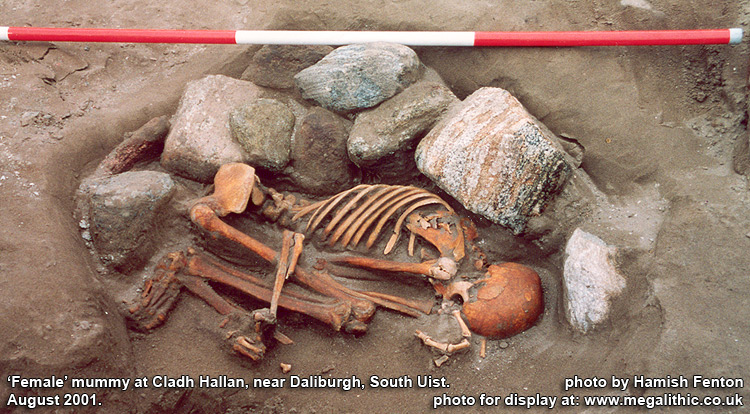
Both are located 300m west of the modern graveyard - Cladh Hallan - in Daliburgh. The one north of the track (which runs from the radiomast to the sea) was largely destroyed by quarrying in the 1980s and early 1990s but the one to the south was rescued in time and has yielded some extraordinary discoveries. Other remains from this period survive in the vicinity and are mostly buried under deep sand. Sadly, many were destroyed over a hundred years ago when the stones from prehistoric houses were dug out to build the graveyard wall.
One burial was most extraordinary. It was the skeleton not of one man but of three. The head and neck was of one man, the jaw from a second and the rest of the body from a third. The head and jaw, like the woman and infant, were about 300-400 years old before burial but the body belonged to a man who had died 500 years earlier. The only way that these skeletons could have maintained their form over so many centuries was if some of the connective soft tissue had remained intact. In the western Scottish climate, even if the weather was slightly better than today, this would not have been possible without artificial preservation of the flesh. There was no sign that the mummification methods were anything like as complex as those practised in Ancient Egypt at that time and this appears to have been an entirely local innovation.
Visiting the site
You can see the outlines of the terraced row of roundhouses in the former sand quarry, reconstructed in stone. Don't forget that the area excavated is just a small part of a much bigger settlement - about 90% of the mound has not yet been excavated. If you walk over the top of the mound, south of the excavated area, you will get a good idea of its former size. The remains of the better preserved of the two double-roundhouses can be visited on the north side of the track, about 200 metres nearer the sea. It was built on top of a sand dune but now stands isolated by the quarry around it. Please take care when visiting - ankles are easily twisted by stumbling into a rabbit burrow when walking on the machair.
Finding Cladh Hallan
The site can be reached from Kildonan Museum by driving south to Daliburgh (Dalabrog). Take the right turn at the Borrodale Hotel and immediately turn right again, past the public bar's car park, on the road which leads westwards. Past St Peter's Church, Daliburgh, turn right again at the T-junction and head for the radiomast. At the radio mast, just before reaching the modern graveyard, turn left along the sandy track and follow it for about 500 metres. You may find it best to park at the radio mast and walk along this track but it is normally driveable. As the track swings round to the left you will be able to see the main site on your left (south) and the smaller site a couple of hundred metres further on to your right. Park along the road on the flat of the quarry area north of the track but be careful not to get stuck!
Extracts from the Project page at the University of Sheffield.
Note: DNA Analysis reveals "Frankenstein" Bog Mummies, one made from people who died a few hundred years apart
You may be viewing yesterday's version of this page. To see the most up to date information please register for a free account.




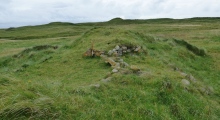





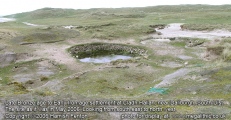
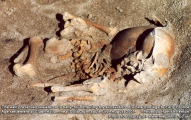
Do not use the above information on other web sites or publications without permission of the contributor.
Click here to see more info for this site
Nearby sites
Key: Red: member's photo, Blue: 3rd party photo, Yellow: other image, Green: no photo - please go there and take one, Grey: site destroyed
Download sites to:
KML (Google Earth)
GPX (GPS waypoints)
CSV (Garmin/Navman)
CSV (Excel)
To unlock full downloads you need to sign up as a Contributory Member. Otherwise downloads are limited to 50 sites.
Turn off the page maps and other distractions
Nearby sites listing. In the following links * = Image available
1.7km S 170° Kilpheder Wheelhouse* Ancient Village or Settlement (NF733203)
3.3km SSE 149° Dun Na Killie Stone Fort or Dun (NF74611905)
3.3km SSE 155° Dun An Duichal Stone Fort or Dun (NF74311885)
4.6km NNE 26° Barp Reineval* Chambered Cairn (NF7549425972)
5.4km N 9° Dun in Loch na Muilne* Stone Fort or Dun (NF7445327237)
5.7km NNE 20° Bornais Ancient Village or Settlement (NF7551527184)
6.6km N 352° Ru Ardvule* Stone Row / Alignment (NF72732860)
7.7km SSE 165° Pollachar* Standing Stone (Menhir) (NF745144)
8.0km NNW 343° Dun Vulan Broch* Broch or Nuraghe (NF71412981)
8.0km E 82° Carra Bhroin (Lochboisdale) Standing Stone (Menhir) (NF81172248)
10.8km NNE 16° An Carra * Standing Stone (Menhir) (NF77033211)
11.7km N 357° Crois Chnoca Breaca* Standing Stone (Menhir) (NF73403366)
14.6km S 187° Kilbar (Isle of Barra)* Ancient Cross (NF703076)
14.6km S 185° Tobar Bharra* Holy Well or Sacred Spring (NF7061607538)
18.6km N 3° Drimore, A' Cheardach Bheag* Ancient Village or Settlement (NF757404)
19.4km N 3° Drimore, A' Cheardach Mhor* Ancient Village or Settlement (NF75704129)
19.7km SSW 195° Dun Cuier Broch or Nuraghe (NF6642003406)
20.5km SSW 197° Allasdale Dunes Cairn (NF65610283)
20.9km SSW 192° Dun Bharpa* Chambered Cairn (NF6719001910)
21.4km S 190° Balnacraig Cairn Barra * Chambered Cairn (NF67620120)
21.9km SSW 196° Borve Standing Stones* Standing Stones (NF65270144)
23.1km SSW 192° Tigh Clach Ancient Village or Settlement (NL667997)
23.3km S 186° Brevig* Standing Stones (NL689990)
23.7km SSW 196° Tobar Chaluim Chille (Barra)* Holy Well or Sacred Spring (NL6492099654)
24.7km NNE 14° Sig More* Chambered Cairn (NF8098345483)
View more nearby sites and additional images

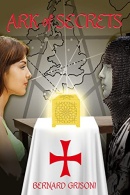
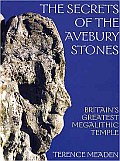

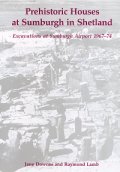
 We would like to know more about this location. Please feel free to add a brief description and any relevant information in your own language.
We would like to know more about this location. Please feel free to add a brief description and any relevant information in your own language. Wir möchten mehr über diese Stätte erfahren. Bitte zögern Sie nicht, eine kurze Beschreibung und relevante Informationen in Deutsch hinzuzufügen.
Wir möchten mehr über diese Stätte erfahren. Bitte zögern Sie nicht, eine kurze Beschreibung und relevante Informationen in Deutsch hinzuzufügen. Nous aimerions en savoir encore un peu sur les lieux. S'il vous plaît n'hesitez pas à ajouter une courte description et tous les renseignements pertinents dans votre propre langue.
Nous aimerions en savoir encore un peu sur les lieux. S'il vous plaît n'hesitez pas à ajouter une courte description et tous les renseignements pertinents dans votre propre langue. Quisieramos informarnos un poco más de las lugares. No dude en añadir una breve descripción y otros datos relevantes en su propio idioma.
Quisieramos informarnos un poco más de las lugares. No dude en añadir una breve descripción y otros datos relevantes en su propio idioma.